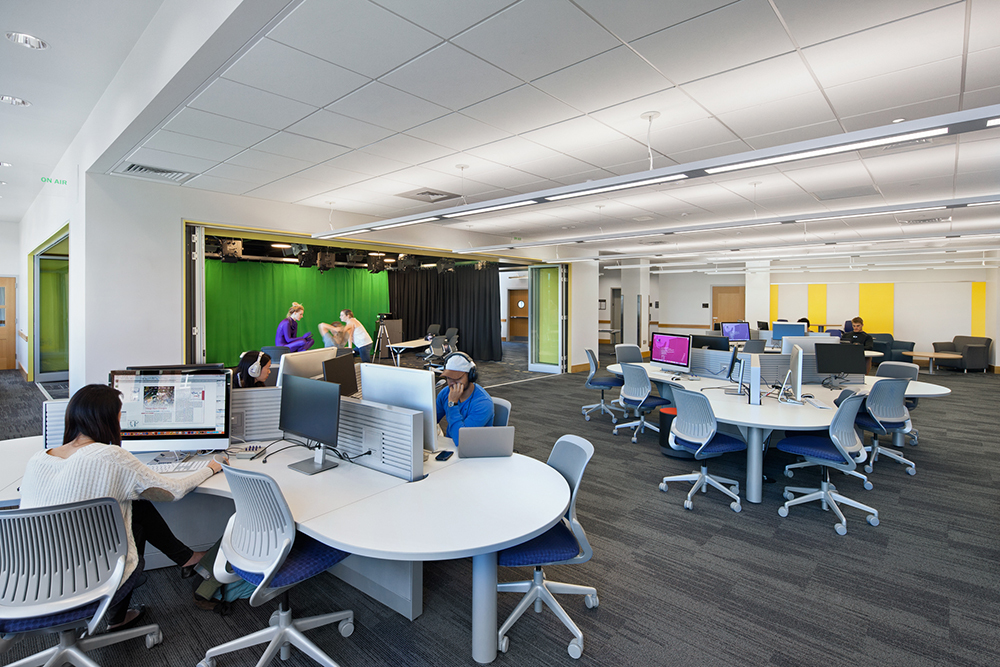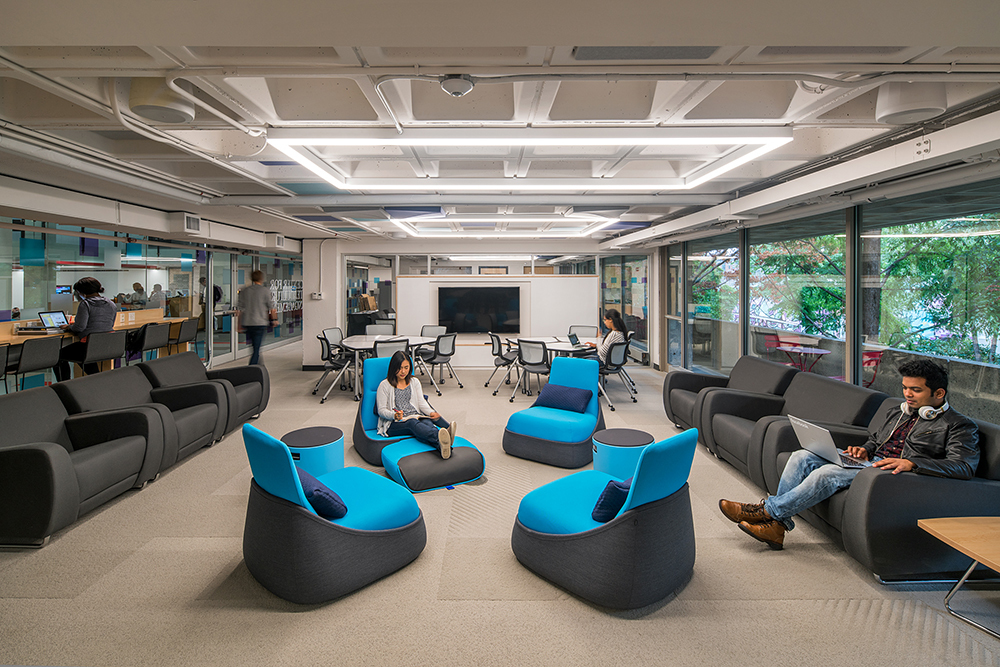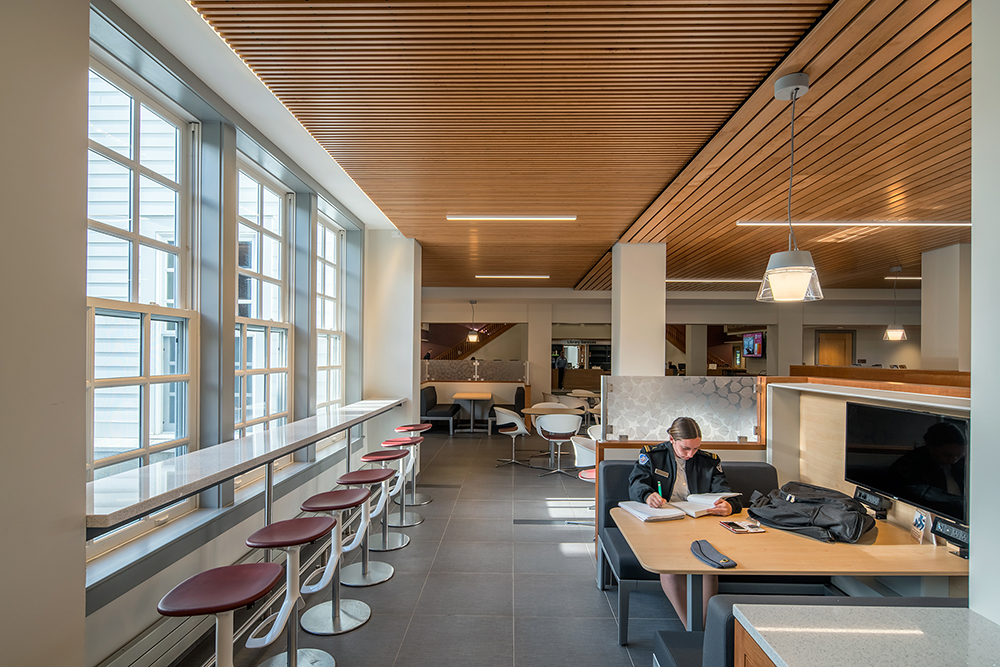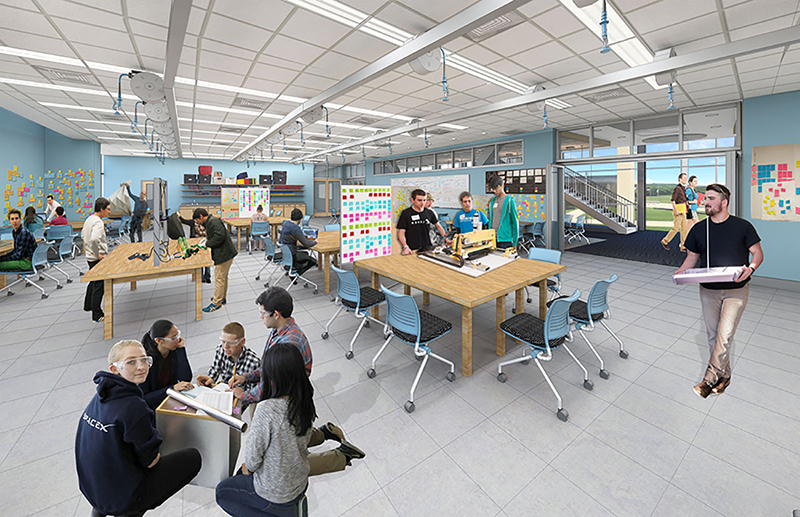Rick Jones

Job title and company: director, Jones Architecture
Degrees: BArch ‘93, University of Kentucky; MArch ‘96 Harvard Graduate School of Design
Professional interests: Sustainable design, higher education, academic libraries, learning spaces; the impact of pedagogy and teaching on space making
What are you working on now?
Our work is predominately in higher education. The largest project is academic space for Norwich University’s College of Professional Schools and College of Liberal Arts. This effort spans renovations to three existing buildings and one new building, and the site and infrastructure that knits them together. Construction is starting this spring, and we are all excited to see this come together. One of the smaller projects is for a local Salem nonprofit, the North Shore Community Development Coalition, designing a workshop and tool library. The workshop will be used to teach basic carpentry to kids, preparing them for apprenticeship with union tradesman and for small renovation projects that the NSCDC self performs on their properties. The tool library will be a resource for the neighborhood-at-large. They are both satisfying for very different reasons.

Image: Dartmouth College (Hanover, NH)—Jones Media Center. Photo credit: William Horne.
How do (or how did) you explain to your mom what you do for a living?
My mom was a teacher. With the majority of our work in education, we talk a bit about what I am seeing in the classroom and with GenZ students—how things are different and what impact that has on design. But for the most part, since starting my own practice, the discussion always turns to whether we have enough work. Not to make a gross generalization, but I think that our parents’ generation was much more interested in the reliability of a steady job than the entrepreneurial step of starting something yourself, so it comes to her with trepidation.
What inspired you today?
Walking into the office. Owning a small practice is a different experience than working for someone else. You look at the group of people who are embarking on this journey with you, and it makes you want to do something great for them, today and every day.
What architectural buzzword(s) would you kill?
Sustainable design. All design should be sustainable. It should be part and parcel of professional services, architecture, and engineering practice.

Image: Northeastern University (Boston)—Center for Intercultural Engagement/Curry Center. Photo credit: William Horne.
When you’re working, do you discuss or exchange ideas with your colleagues?
Constantly. We have an office of 10 people. We also share space with another architecture firm, an interior designer, and have had other tenants over time (landscape architect, graphic designer, website designer). With an open office setting, there are opportunities for informal exchange of ideas or advice on an ongoing basis. We also have formal mechanisms like Friday Pin-Ups where teams present ideas that they are working on in their projects for group critique. Beyond the physical office, we see huge value in the interdisciplinary collaboration with our consultants, CM/GC’s, subcontractors, and our clients, and we regularly hold virtual and actual meetings with these partners.
What are you reading?
There are two books on my nightstand at the moment, Josef Frank—Spaces and Fantasies of the Library. I spent a lot of time with Frank’s writing on accidentism when working on my graduate thesis and was pleased to discover this new publication looking at six of his single-family homes from the 1920s-’50s. I picked up Fantasies of the Libraryat the MIT Press, with whom we were fortunate enough to work recently on their relocation to Massachusetts Avenue. That was a great experience with a great client, but unfortunately for my wallet, I have been spending a lot of time there! Fantasies speculates on what the future library could be through a book-as-exhibition format.
Do you sketch by hand or digitally?
I still sketch by hand to both explore concepts and diagrams, and noodle through construction details. But I do use digital resources as well.
Has your career taken you anywhere you didn’t expect?
Bangladesh! This was a four- week adventure to look at a potential new campus when I was working with my previous employer. I never thought I would get to see Kahn’s project at Dhaka, so it was worth the trip for that alone, even though the project never materialized.

Image: Norwich University (Northfield, VT)—Kreitzberg Library. Photo credit: William Horne.
Where is the field of architecture headed?
I am surprised at the number of firm acquisitions that I see occurring with increased frequency every year. I am not sure what this means for design or professional service. As the owner of a small design practice, focused on client service in higher education, we value personal relationships and the network we have built with clients and institutions that we serve. This intimacy is important to us.
Can design save the world?
If it can, then it is in terms of the “buzzword” question above. Sustainable design cannot be a separate chapter of the work that we all do. It must be integral to every action we take. It must be done at every scale—from industrial design to buildings, infrastructure, and urbanism. Climate change remains our generation’s challenge, and design can make a difference.
What do you hope to contribute from your work?
With every project, no matter how large or small, we inch toward more sustainable solutions. We acknowledge that not every project can be a tour de force of sustainability but strive for every decision to be as sustainable as possible and pointed toward occupant comfort and well-being. It could be as simple as improved natural light or no-VOC carpet tile. It could be reduced embodied energy by recommending a thoughtful and creative renovation instead of the presupposed addition that the owner thought we were solving for. It is often rethinking the question to get to the right answer.
Who or what deserves credit for your success?
I was very lucky to have had great mentors at William Rawn Associates and PDR|P Architects. What I realize more and more with running my own practice is that the people that work for me deserve the most credit for my success. They are on the front line, solving problems for clients, working through field conditions with CM/GCs, and making sure that the design intent is not lost in the process. They are Jones Architecture in the eyes of our clients.

Image: Olin College of Engineering (Needham, MA). Photo credit: Jones Architecture.
Your least favorite college class?
Physics. I actually had my high school AP physics teacher again in college (he had moved up in the world). What should have been an anonymous survey course came loaded with expectations!
If you could give the you-of-10-years-ago advice, what would it be?
Start your own practice sooner! We are at the start of year seven and it has been a great ride so far.
Your favorite Boston-area structure?
It’s hard to beat the Saarinen chapel at MIT for pure experience: the quality of light, reflection of the water, the urban character of the long rectangular volume parallel to Mass Ave. It has obligatory Boston brick detailing with a Saarinen twist. Then, there’s always Fenway Park, which is food for my soul.
Who would you like the BSA to interview next?
Van Jones. The Green Economy can solve the two major challenges facing our generation—economic inequality and the environment. Architects can be instrumental to this economy.
If you could sum up your outlook on life in a bumper sticker, what would it say?
“Appearances are never deceiving.” One of my favorite Paul Klee quotes.

